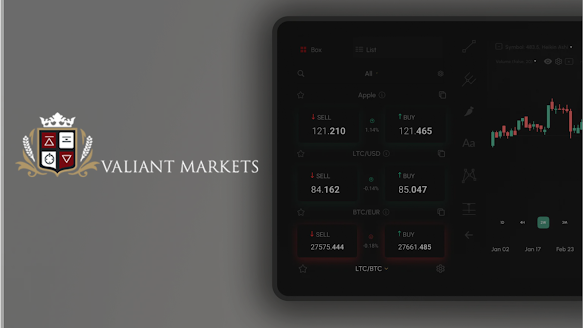5 Forex Trading Signals You Need To Master To Understand The Market
It should be no surprise that every trader in the cutthroat foreign exchange industry is looking for an "edge" to give them a competitive advantage. Even though the precise nature of what it means to have an "advantage" is frequently the subject of heated dispute, there is no disputing that many traders devote a significant amount of their time to analyzing forex trading signals. These signals are one of the most significant tools a trader can have to stay ahead of the market.
With the principles of a forex trading signal outlined, it's time to grasp the main types provided by Valiant Markets to better comprehend the market and avoid errors.
Moving Averages
Every trader should understand the moving average. Central banks and international corporations drive Forex. Therefore, it's crucial to comprehend macro trends. The moving average is one forex indicator representing the price's overall mood.
If the price is above the moving average, buyers are in control. Price below the moving average suggests sellers control the price. If the price is above the moving average, you should buy. A trader should know this forex indicator.
MACD
Moverage Average Convergence and Divergence (MACD) is a trading tool that incorporates a histogram and an exponentially weighted moving average. This indicator's primary function is to determine whether or not there is a divergence between itself and the price. A market turn is indicated when there is a regular divergence between MACD and price. In contrast, a market continuance is indicated when there is a hidden divergence between these two indicators.
Stochastic
Stochastic is a well-known example of a momentum indicator, which first appeared in the early 1950s. The primary objective of this indicator is to determine if the market is overbought or oversold at the current time. Traders frequently need to locate a potential profit-taking location in their trading strategy to maximize their profits.
Consequently, they use this forex indication to pinpoint the point at which the price is anticipated to start moving in the opposite direction. The levels of the stochastic indicator range from 0 all the way up to 100.
Parabolic SAR
Parabola SAR can forecast the future direction of a currency pair's market. An indication of a bullish trend is when the price is above the Parabolic SAR. Contrarily, a bearish trend is indicated when the price is below the SAR. This indicator helps traders spot trends. Parabolic SAR rejection provides an entry point.
Pivot Point
The supply and demand for a currency pair meet at the pivot point. When the price hits the pivot point position, it indicates that the supply and demand for the particular pair have become equal. Rising demand for a currency pair would result in a price that is higher than the pivot point. On the other hand, the supply would be at a high level if the price dropped below the pivot point.
The experts at Valiant Markets are here at https://www.valiantmarkets.com/ to help you know about you can gain expertise in understanding the trading signals of Forex.
.png)

.png)
Comments
Post a Comment